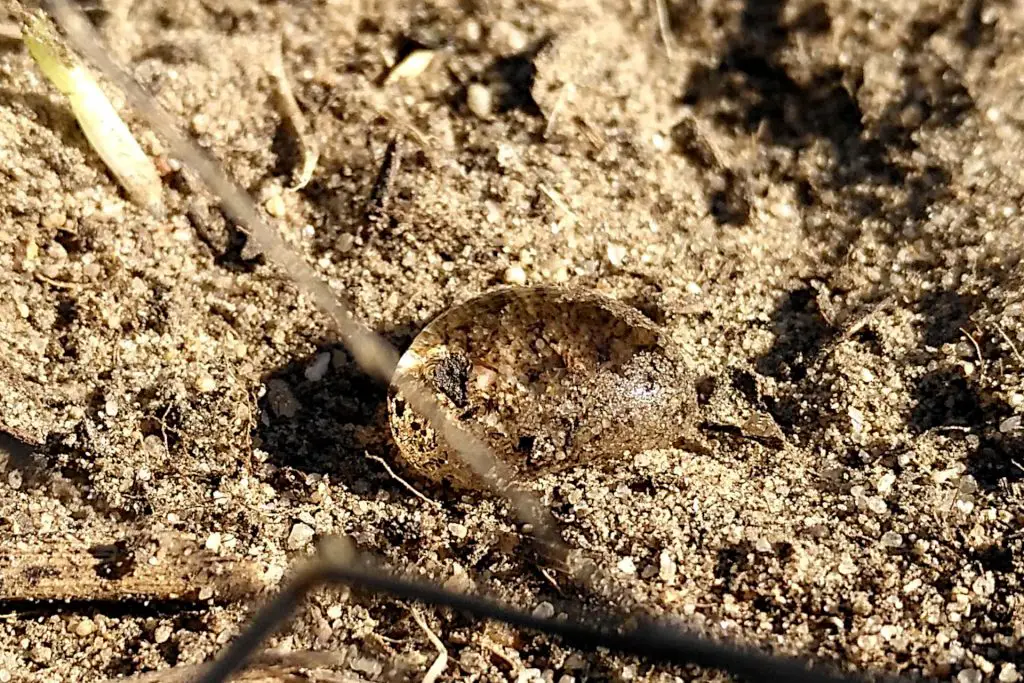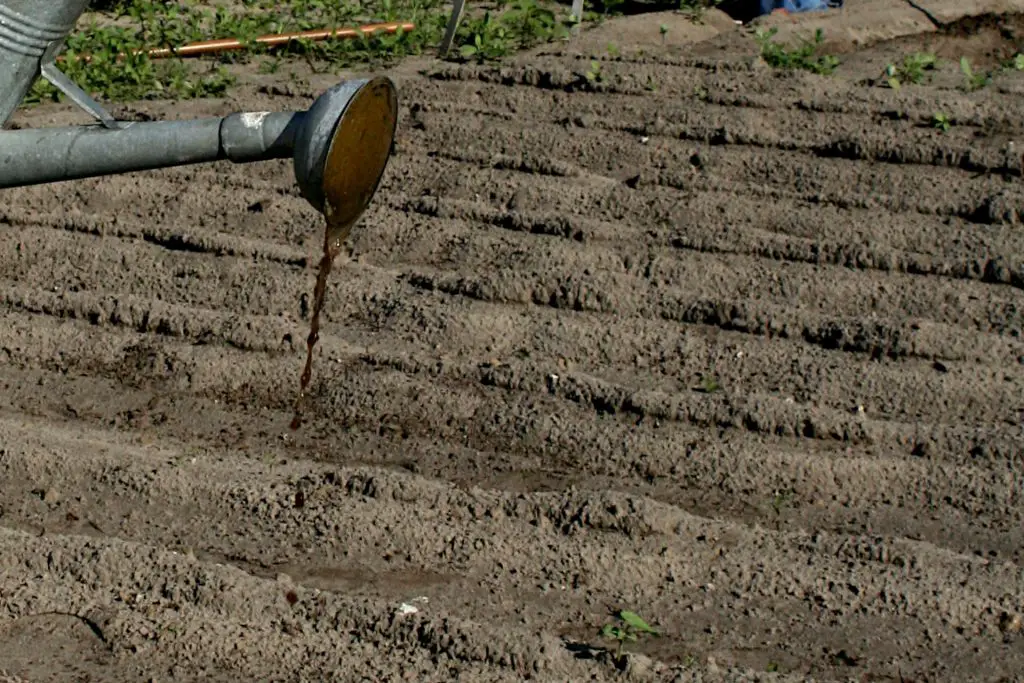11 Simple Ways To Fix Hydrophobic Soil. How to Effectively Treat Water Repellent Soil
Hydrophobic (water-repelling) soils are a common issue in many parts of the world and are notoriously difficult to treat and manage, as they tend to repel water and nutrients. However, there are simple steps you can take to improve hydrophobic soil conditions and make them more productive.
There are many ways to fix hydrophobic soil, but ten of the simplest and most effective solutions are outlined in this article which will help you to restore soil moisture, and increase fertility.
When soil becomes hydrophobic it can be a major problem for plants as water is necessary for plant growth. Soil needs to have a moisture content of between 20% and 40% to enable plants to thrive. There are several simple ways to fix hydrophobic soil and reset the moisture content and nutrient levels which range from the addition of organic materials and wetting agents to building irrigation and drainage channels.
What is Hydrophobic Soil?
Hydrophobic soil can be caused by many different factors, from climate through to poor land husbandry. Hydrophobicsoil can also result from fire or wildfires.
The Science

Soil is defined as hydrophobic when it will not absorb water after around 5 seconds. Levels as the soil approaches failure are assessed on a hyperbolic scale. The lack of absorption is caused by a waxy residue that forms on the surface of the soil particles. This waxy residue prevents the water from absorbing into the soil. The water will instead form droplets that will sit on top of the soil and create a pool.
This can be a problem for plants because they need water to survive. The water will not be able to penetrate the surface of the soil and it will pool around the plants. This can lead to drought conditions and can cause the plants to become stressed.
Reintroducing Moisture in a Hydrophobic Soil?
Gardeners aren’t always given the opportunity to work in ideal conditions whether they begin a new garden, repot an existing plant, or construct a new raised bed. Nature can contribute significantly to dealing you a bad hand and one of the trickiest problems that it can deal is hydrophobic soil.
There are many varying degrees of hydrophobic soil, as well as many various approaches to resolving it.
However, soil can be a frustrating organism to deal with. Many soils are made up of materials that don’t like water, so anything you do to improve the soil’s moisture content can sometimes be difficult.
A lack of moisture and nutrients can lead to the deterioration of soil properties. One way to improve the quality of hydrophobic soils is by changing the structure or composition. There are various ways to reintroduce moisture, and missing nutrients, and create an environment that is more hospitable for plant growth. Some methods include using irrigation systems, creating drainage systems, soil wetting agents, and applying an organic amendment.
#1 Adding Organic Matter to the Soil – Compost
One of the simplest ways of dealing with hydrophobic soil is to add organic materials. Adding organic materials, such as compost, to soil can help improve the soil’s structure and water retention properties.
One of the best materials to use is compost. Compost is rich in nutrients and helps to improve the soil’s composition. By adding compost to the soil, you can help increase the water retention capacity of the soil, which will help plants grow better in dry conditions.
Additionally, adding compost can help improve the structure of the soil, making it less dense and more porous. This will allow for better air circulation and water drainage, which is important for healthy plant growth.
Once you have mixed compost into the soil, water regularly, test the ground daily with a soil moisture meter. When until the soil consistently reads over 20% moisture you have successfully rehydrated.
#2 Rehydrating Water Repellent Soil With Compost Tea

Another form of organic material is compost tea. There is a multitude of ways in which you can make it but essentially, compost tea is a brewed liquid that concentrates bacteria, fungi, and other organisms. It’s easily absorbed and provides a nutrient-dense liquid for plants.
Steeping compost in water is the best way to extract important microbes. Molasses can also be added to the mix to create a more balanced tea with beneficial bacteria, fungi, and protozoa. Compost tea has been shown to suppress plant diseases, increase growth rates, and promote healthy root development. Nematodes are also important members of the compost tea community and play an important role in breaking down organic matter.
When you have enough compost tea, if you haven’t already, you can break up the top six to eight inches of soil and then gradually soak the broken ground with the compost tea, once a day and then plain water later in the day. Keep testing the ground with a soil moisture meter repeating the daily soaking routine until you get to about 20% moisture content.
#3 Mulching Over Your Soil to Reverse Soil Erosion and Rehydrate Hydrophobic Soil
Mulching can probably be described more as a preventative strategy but when combined with some of the other methods here can be a very good way of rehydrating the soil.
In order to avoid hydrophobic conditions, mulch acts as a preventative measure to reduce evaporation or prevent the soil from drying out completely so preventing conditions that are hostile to hydrophilic organisms.
Mulching helps to maintain an even moisture level in the soil, keeping it healthy and less susceptible to drought. The layer of mulch also helps to insulate the soil from extreme temperatures, which can further damage or dry out the top layer of soil. By keeping the top layer of soil moist, mulching can help to reduce water loss and minimize the impact of drought conditions on plants.
There are a variety of materials that can be used as mulch, including straw, leaves, and bark. Choosing the right type of mulch is important, as it needs to be able to retain moisture while also allowing air circulation. If the area in question in vast then you can use a hydromulching process. Whith Hydromulching the variety of mulches is much wider. The are specific mulches designed to deal with erosion and hydrophobic conditions such as bonded fiber matrix and flexible growth medium.
#4 Sprinkler Method for Rehydrating Soil

Using a sprinkler or drip irrigation system is another way that you can rehydrate and treat hydrophobic soil. The process involves sprinkling small amounts of water on the soil at intervals. The water will pool but not run off. This, in effect, imitates light rain or drizzle.
Repeat this process until the soil moisture content of the soil climbs above 20%. A drip irrigation system can also be used to help to retain moisture. The dryer your soil the more important it is to add water gradually so that the soil can absorb it.
Adding nutrients to the water will also aid the sustainability of the rehydration in kick-starting the soil’s ecosystem.
#5 Using Irrigation Rows and the Swale Method to Fix Hydrophobic Soil
Irrigation systems and irrigation trenches are alternative methods to the sprinkler method to help rehydrate the soil.
The simplest way to get water into the ground is with a hose. Dig small holes along your garden’s perimeter, then attach flexible soaker hoses or drip irrigation lines to the outside of the watering can (or if you have a large enough area, attach them directly to your faucet). Fill each hole about halfway with water. If there isn’t any rain in sight, it’ll take more than one session for this method to work—you may need as many as 10 sessions of watering at intervals until everything gets sufficiently wet again.
Alternatively, trenches are dug with raised edges that prevent the soil from running off forcing the soil to infiltrate the soil.
This technique allows water to penetrate the ground below, at some point. The primary distinction between methods lies in the fact that the irrigation row and swale systems enable significantly greater quantities of water to remain on the surface of the soil without draining away.
#6 Tilling and Combining the Hydrophobic Soil with a Water Nutrient Solution

For solutions where the soil has become hardpan, a layer of compacted soil that can impede water infiltration, it is more effective to break up the soil surface.
One way to do this is by using a rototiller or disk harrow and adding a water nutrient solution to help mechanically bind water molecules with soil particles. This helps the water penetrate deep into the soil, rehydrating it and providing essential nutrients.
In addition, tilling the soil with water once or twice a year can help reduce the future incidence of hardpan crusts forming.
Using Wetting Agents to Treat Hydrophobic Soil
One of the most common ways of treating hydrophobic soil is through the use of wetting agents. In short, a wetting agent is a solution that helps to break the surface tension of water so it can be absorbed into the soil. Wetting agents can be both bought commercially or produced at home.
Using a wetting agent before watering plants will help hydrophobic soils absorb the water more easily, which in turn allows for greater nutrient uptake and improved plant growth.
#7 Using Commercial Wetting Agents
There are many commercial products available that contain specific wetting agents formulated to work best with certain types of plants and soils.
#8 Using Homemade Wetting Agents
It is possible to produce your own wetting agents using soap or detergents or mixing up a solution from agar powder. These homemade wetting agents should be just as effective in breaking down the moisture barriers in soils, on leaves, and on other surfaces.
In general homemade wetting agents tend to be safer than commercial solutions because they don’t use harsh chemicals like sodium laureth sulfate or sodium lauryl sulfate. The surfactants in homemade solutions such as dishwashing liquid act similarly by lowering the surface tension of water but without these chemicals
Dealing With Hydrophobia in Potted Plants
Hydrophobic soil is not just confined to outdoor soil. It can also affect soil used as a growing medium with pot plants. The solutions for dealing with these conditions are fairly straightforward and don’t require any special equipment.
#9 Using Water Crystals or Peat to Treat Dehydrated Soil
Soil particles have a natural tendency to repel water molecules, which is why that soil that has become hydrophobic is so difficult to water and can often lead to plant dehydration.
One way to combat this issue is by using water crystals or peat, both of which can help boost the water-holding capacity of pot plant soil. Water crystals are made up of small, absorbent molecules that attract and hold onto soil particles, while peat is a natural substance made up of decomposing plants that helps increase the soil’s ability to retain moisture.
When used together, water crystals and peat can help keep your pot plants well-hydrated, even in hydrophobic soil.
#10 Pot Immersion in Water and Nutrient Bath
Another simple treatment for hydrophobic pot soil is full pot immersion. If you have a potted plant with hydrophobic soil, you can inject nutrients and water directly into the soil particles by placing the pot into a trough of a water nutrient solution so that it covers the pot entirely.
This is an easy way to help keep your plants healthy, and it also helps to extend the time between waterings. It is best to use organic liquid fertilizer or compost tea instead of a powder or granular synthetic fertilizers, as the nutrients dissolve more easily and will be better for the plants.
#11 Using a Simple Bottom Watering to Rehydrate Soil
Our last solution for dealing with hydrophobic soil in pots is to bottom feed water and nutrients into the pot. To do this you would need a pot with holes or be able to drill holes in the bottom of the pot. Once you have holes in the bottom, sit the pot in a tray full of a water nutrient-rich solution to revive and rehydrate the soil.
Summary:
The water hold capacity of soil is crucial to your plant’s health. Unfortunately, under certain conditions soil repels water resulting in it drying out and leading to probable soil erosion.
By using some of the simple methods of rehydrating your hydrophobic soil you can return the soil to good health. Healthy soil is soil with a moisture level of between 20 and 40%, that is not compacted and has a good level of nutrients. By using some of the simple methods of rehydrating the soil and infusing nutrients it will once again allow plants to thrive.
